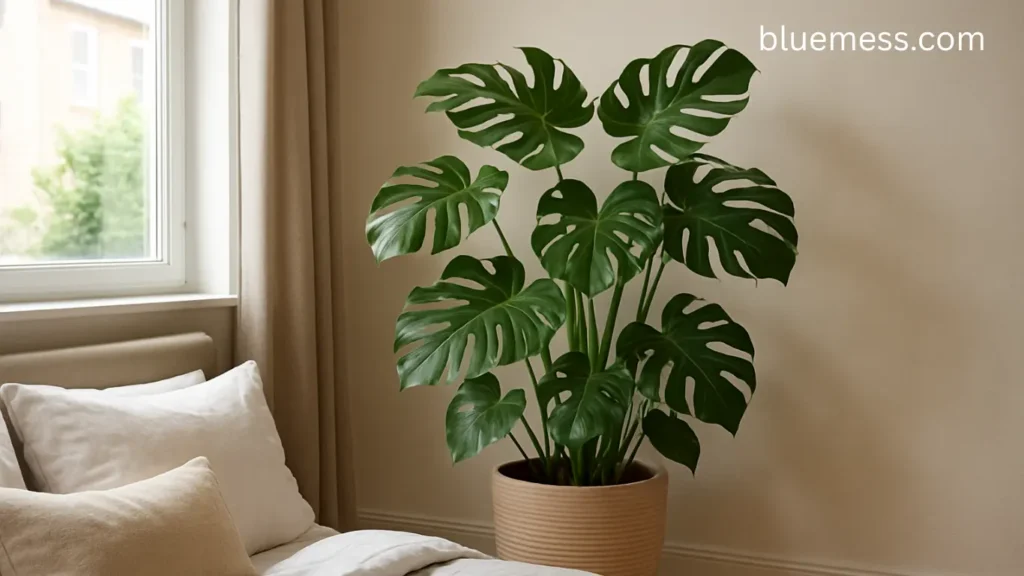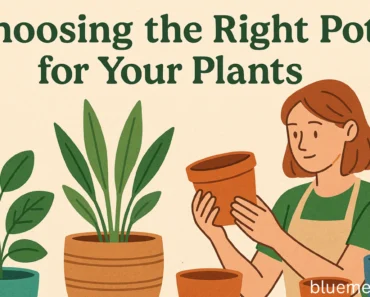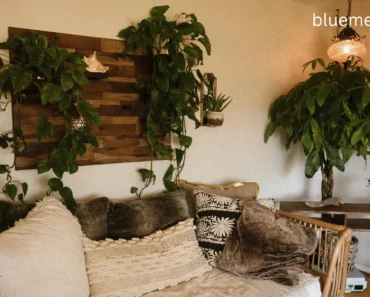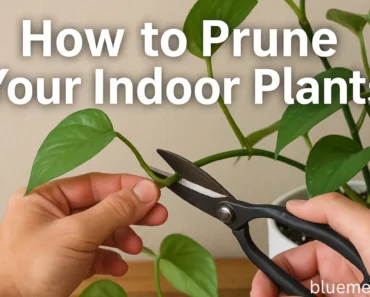
Table of Contents
Unlocking Your Bedroom’s Green Potential
Step into a bedroom that looks beautiful and enhances your well-being. The right plants can create a fresher, calmer atmosphere and support restful sleep—making this sanctuary a reality, not just a dream.
If you’re searching for the best plants for bedroom spaces, particularly those challenging low-light corners, you’ve likely encountered conflicting advice and watched helplessly as supposedly “low-light-loving” plants slowly withered away. The truth is, choosing the right plants for your bedroom—especially spider plants and other low-light plants for bedrooms—requires understanding your actual environmental conditions rather than following generic room-based recommendations.
Here’s what you’ll gain: clear steps to choose and care for plants that work for your space, how to solve low-light issues, and ways to enjoy the real benefits—better air, restful sleep, and personal well-being. You’ll have a direct path to turning your bedroom into a thriving green retreat, no matter your unique lighting or layout.
The Truth About “Low Light” and Plant Survival
Myth 1: “Low-Light Plants Love Darkness”
Let’s address the elephant in the room: no plant actually loves darkness. Plants need light for photosynthesis—it’s literally their food source. When we talk about “best plants for low light” conditions, we’re really discussing plants that can tolerate or survive in reduced light, not thrive in complete darkness.
Understanding light levels is crucial for bedroom plant success:
- Bright Direct Light: Intense sunlight directly hitting plant leaves, typically found right at south or west-facing windows
- Bright Indirect Light: Filtered or dappled light, common in east-facing windows or a few feet from south/west windows
- Low Light: What you’ll find near north-facing windows or several feet from any window
- No Light/Truly Dark: Windowless rooms or deep corners with no natural light access
Here’s a critical insight: light intensity drops dramatically even just a few feet from a window. That sunny windowsill and the nightstand three feet away might as well be different planets as far as your plants are concerned.
Myth 2: “Plants Emit Harmful CO2 at Night”
This persistent myth has kept countless plant lovers from enjoying good plants for bedroom spaces. While it’s true that plants respire and release CO2 at night, the amount is negligible—far less than what you, your partner, or your pets produce. It’s carbon monoxide, not dioxide, that poses danger, and plants don’t produce that at all. Your bedroom plants are completely safe companions for nighttime.
Plants Don’t Care What Room They’re In
Here’s a game-changing concept: plants respond to conditions, not room categories. A spider plant doesn’t know or care whether it’s in your bedroom, bathroom, or living room. What matters are:
- Light levels and duration
- Humidity percentages
- Temperature stability
- Air circulation
- Soil moisture
This means that advice about “bedroom plants” can be misleading. Your bedroom may have vastly different microclimates. Knowing these variations is essential for selecting the best plants based on actual conditions.
The Proven Benefits of Bedroom Plants: More Than Just Decor
Air Purification Powerhouse
Indoor plants act as natural air filters, removing common household toxins like formaldehyde, benzene, xylene, and toluene. NASA’s Clean Air Study confirmed what plant enthusiasts have long suspected: certain houseplants, including the humble spider plant, effectively cleanse indoor air of pollutants that off-gas from furniture, carpets, and cleaning products.
Nighttime Oxygen Production
While most plants pause oxygen production at night, certain species using CAM photosynthesis continue converting CO2 to oxygen even in darkness. Snake plants and aloe vera are champions in this category, making them ideal best plants for bedroom environments where fresh oxygen during sleep hours is particularly beneficial.
Natural Humidity Regulation
Plants release moisture through transpiration, naturally increasing humidity levels. This can alleviate respiratory issues, reduce static electricity, and help prevent the dry skin and irritated sinuses that plague many bedroom environments, especially during winter months when heating systems parch the air.
Mental and Physical Well-being
Beyond their physical benefits, bedroom plants provide psychological advantages:
- Reduced stress and anxiety levels
- Enhanced mood and mental clarity
- Improved sleep quality
- Increased productivity and focus
- A greater sense of connection with nature
Aesthetic Enhancement
Let’s not forget the visual impact. Good plants for bedroom spaces add life, color, and texture, transforming sterile rooms into vibrant, welcoming sanctuaries. Whether you prefer the cascading elegance of a spider plant or the architectural drama of a snake plant, greenery brings unmatched vitality to your personal space.
How to Choose the RIGHT Plant for YOUR Bedroom
Step 1: Assess Your Bedroom’s Light Profile
Light is the most critical factor when selecting low-light plants for bedrooms. Start by evaluating:
- Window Orientation: South and west-facing windows receive the most light, east-facing provides moderate indirect light, while north-facing offers the least
- Distance from Windows: Remember that light intensity diminishes rapidly with distance
- Obstructions: Trees, buildings, or window treatments that filter incoming light
Try the shadow test: Hold your hand where you plan to place a plant. A crisp, defined shadow indicates strong light; a soft, fuzzy shadow suggests medium light; no discernible shadow means you’ll need the most tolerant best plants for low light conditions.
Step 2: Understand Temperature and Air Movement
Bedrooms often experience temperature fluctuations from heating/cooling systems, open windows, or proximity to exterior walls. Ensure your chosen spot:
- Maintains temperatures above 59°F (15°C) in winter
- Avoids direct heat from radiators or vents
- Stays clear of cold drafts from windows or AC units
Step 3: Evaluate Humidity and Airflow
Don’t assume bedroom humidity is consistent. Observe where condensation forms, how quickly soil dries in different spots, and whether certain areas experience more air movement. These factors significantly impact which plants will thrive.
Step 4: Consider Your Lifestyle
Be honest about your plant care habits. Are you a devoted daily tender or more of a “water when you remember” person? Choose plants that match your maintenance style—drought-tolerant varieties for forgetful waterers, or more demanding species if you enjoy regular plant care routines.
Step 5: Prioritize Safety
If you have pets or children, research plant toxicity carefully. Many popular houseplants can be harmful if ingested. Create a safe environment by choosing non-toxic options or ensuring toxic plants remain completely out of reach.
Top Recommended Houseplants for Bedrooms
For Bright Indirect Light Bedrooms
Spider Plant: Air-purifying, easy to grow, thrives in bright indirect light. Produces plantlets and removes toxins like formaldehyde and xylene.
Peace Lily: Elegant with white blooms, removes air toxins, signals thirst by drooping. Toxic if ingested.
Pothos: Forgiving trailing plant, tolerates low light, good for air purification.
Chinese Evergreen (Aglaonema): Available in stunning color variations, these plants tolerate neglect while adding tropical flair. They’re excellent low-light plants for bedrooms that actually prefer to dry out between waterings.
Areca Palm: Large, pet-friendly, adds humidity, purifies air, and thrives in indirect light.
For Truly Low-Light Bedrooms
ZZ Plant: Tolerates extreme low light and neglect. Waxy leaves store water for drought resistance.
Cast Iron Plant: Survives near darkness and neglect; ideal for the darkest corners.
Snake Plant: Tolerates low light, produces oxygen at night, hardy but can be toxic to pets.
Takeaway: Even the most resilient plants need some light. For truly dark or windowless areas, supplementing with grow lights is necessary for plant health over the long term.
Plants to AVOID in Low-Light Bedrooms
Not all plants adapt well to bedroom conditions. Avoid:
- Succulents and Cacti: Need strong sun, do not tolerate low light well.
- High-Light Bloomers: Require intense light and frequent sun exposure.
- Highly Variegated Plants: Colorful patterns require more light to maintain
Essential Care Tips for Bedroom Plant Success
Takeaway: In low light, water sparingly. Always check soil moisture first. Overwatering is the most common mistake for bedroom plants, so let the soil partially dry before the next watering.
Lighting Logistics: Maximize available light by keeping windows clean and using sheer curtains rather than heavy drapes. For truly dark spaces, invest in full-spectrum LED grow lights.
Humidity Hacks: Group plants together to create humid microclimates, use pebble trays filled with water, or mist regularly (though some plants prefer dry leaves).
Feeding Schedule: Fertilize sparingly—low-light plants grow slowly and need less nutrition. Use diluted, balanced fertilizer only during active growing seasons.
Maintenance Matters: Dust blocks light absorption, so wipe leaves monthly with a damp cloth. Rotate plants quarterly for even growth, and repot when roots outgrow containers.
Creative Display Ideas for Your Green Bedroom Oasis
Transform your bedroom into a botanical retreat:
- Vertical Gardens: Utilize wall space with mounted planters or macramé hangers for trailing plants
- Layered Displays: Combine plants of varying heights on shelves or plant stands
- Bedside Companions: Place small, air-purifying plants on nightstands for close-proximity benefits
- Statement Corners: Anchor empty corners with large floor plants in decorative containers
Cultivating Your Thriving Bedroom Environment
Creating a successful bedroom plant collection is about understanding your specific conditions and matching them with suitable plants. Whether you start with one spider plant or a whole indoor jungle, success depends on observation, adaptation, and choosing plants that fit your real bedroom environment—not idealized options.
Summary: Start with one or two well-chosen plants that fit your bedroom’s conditions. Watch, adjust, and your sanctuary will improve air, sleep, and your sense of well-being. Tailor care to your exact setup for best results.
Frequently Asked Questions
Q: Are plants really safe to keep in the bedroom while sleeping? A: Absolutely! Despite persistent myths, bedroom plants produce negligible CO2 at night—far less than humans or pets. Some plants even produce oxygen 24/7, making them beneficial bedroom companions.
Q: What are the most low-maintenance plants for beginners? A: Spider plants, pothos, ZZ plants, and snake plants top the list. These resilient species tolerate irregular watering and lower light conditions while still providing air-purifying benefits.
Q: How do I know if my bedroom is too dark for plants? A: If you can’t cast even a faint shadow where you want to place a plant, it’s too dark without supplemental lighting. No plant can photosynthesize in complete darkness indefinitely.
Q: Which bedroom plants are safe for pets? A: Spider plants, Boston ferns, areca palms, and prayer plants are pet-friendly options. Always research toxicity before bringing new plants into homes with curious pets or children.
Q: How often should I water my low-light bedroom plants? A: Less frequently than plants in brighter locations. Check soil moisture regularly—most low-light plants prefer their soil to dry out partially between waterings. Overwatering is the number one killer of indoor plants.
Ready to transform your bedroom into the green sanctuary you deserve? Start with one or two plants that match your conditions, and watch as your space—and well-being—flourishes.
Author
George Wine is a seasoned gardening expert with over 20 years of experience in the field of horticulture. His passion for plants and nature has driven his career, where he has honed his skills in various aspects of gardening, from landscape design to plant care. George holds a Master of Science in Horticulture from the University of California, Davis (UC Davis), a prestigious institution known for its research and advancements in plant science.
Throughout his career, George has worked with a diverse range of clients, offering tailored solutions to enhance outdoor spaces and create thriving gardens. His knowledge and expertise allow him to provide invaluable advice, ensuring that both novice and experienced gardeners achieve their gardening goals. Whether you’re looking for tips on sustainable gardening practices, innovative design ideas, or advice on specific plant species, George is here to help you cultivate the garden of your dreams.






